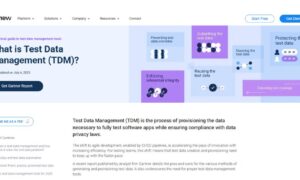Managing considerable amounts of data has become challenging for companies, and data archiving is a crucial way to overcome this. Data archiving is done to shift the sparse data into archived files, and it also results in freeing up a lot of storage space. It is a cost-effective strategy to store tons of data without worrying about storage consumption.
With a data archiving solution, you can easily index, search and fetch records and files whenever you need. It also allows making a secondary backup and helps in advancing compliance in the organization. This blog will find the five best data archiving practices and more.
5 Benefits of Data Archiving
Data management plays a huge role in making your company successful at every stage, which is why data archiving is important. Data archiving helps organizations store data safely and securely for an extended period of time. It enables automation when it comes to data lifecycle management. Let us look at some of the benefits of archiving data:
- Data Outlook and Discoverability
With the right data archiving software, you can make your unused data more visible and accessible whenever you want. This makes unsorted data into structured one and becomes more useful at the time of need. It also makes infrequently used data more searchable as well.
Finding the required file at a time of urgency always leads to cliche, but discoverability puts an end to all such omens if you archive data. Archiving allows employees and any member of the authorized organization to view data, whether it is an image, video, email, document, etc.
- Data Management
Managing data is a dream of every small and big company. Aging files are gold for every company and turn out to be assets. Most companies lose old data because it is ungoverned; with an archiving solution, you can easily get things going for your company.
- Elevate Compliance
There are now strict rules about data protection set by every government, and no one knows when the oldest file will come in handy when things get dirty. With an archiving solution, you can access all types of records wherever and whenever you want.
- More Storage and Easier Backup
When considerable volumes of data are stored in smaller files, you will benefit from having more storage for more data. You don’t have to buy extra storage space when you can use archiving solutions and software.
As we have said earlier, archiving data is a good option for making a backup, but we skipped the good part. The additional benefit is that you can create a backup with just a few clicks, and it does not take more than ten minutes, even if you have a lot of data.
Also, cloud and extra hardware storage solutions are very much expensive. However, with an archiving solution or software, you can have all the above perks in a cost-effective way.
- More Security
You can create multiple backups via archiving data and store them in different locations; this improves security on all levels. However, cloud storage solutions are often reported with cyberattacks, and on bad days, physical devices can be damaged, resulting in loss of data for good.
4 Best Practices for Data Archiving
Data archiving means moving unnecessary but undeletable data into a safer place for the longest period. Data archiving empowers companies to utilize fewer resources and improve productivity with efficiency. Let us look at some of the practices that can streamline your data archiving processes:
- Identify the Data for Archiving
The first practice in making an archiving policy is to see what kind of data is used once in a while and make an inventory of such files, folders, and records. Prioritize the data and then categorize accordingly. This is among the initial steps of structuring the scattered data.
- Develop an Archival Plan
An archival plan will help you to create a data management lifecycle. In this step, you have to be very specific about how long you need to keep the files and records archived. Moreover, it would help to consider how often you want to unarchive them.
You might have to chip in all the employees and ask them about which data they rarely use – this step will take a lot of your time, but it will be worth it when things go smoothly.
- Prioritize Regulatory Compliance
You need to develop a data archiving policy that is compliant with the latest compliance and regulatory standards. If you need to go strictly by the book of compliance, set two different archives; one that can be accessed by anyone and the one that needs authorized access. It all depends on the compliance rules and regulations that the organization follows.
- Create a Backup Plan
By developing a backup plan, you will rest assured that all of your data is preserved and can be recovered quickly. In addition, the backup plan will make sure that you have all the crucial data stored in a safe and secure location. To create an effective backup plan, it is essential to first sort the data according to its importance and determine whether it needs to be stored.
Not only does a backup plan help to recover your data, but you can easily access it whenever needed. Thereby, a backup plan ensures your data is preserved in a secure location that can be accessed whenever you want to.
Final Thoughts
Data archiving ensures that you never have to worry about increasing volumes of data, changing regulations, data security, and other aspects of data. When you archive data, you get the ease of accessibility, affordability, discoverability, and so much more. The best part is when your data is archived, you can easily recover your data in the case of any unprecedented events that may lead to data loss.
ShareArchiver is one of the best options available to archive your data and streamline your data archiving processes. We provide you with the expertise to plan your data archiving strategy, and all of its solutions are cost-effective. Visit us today and explore more about the different data archiving options on our website.



































